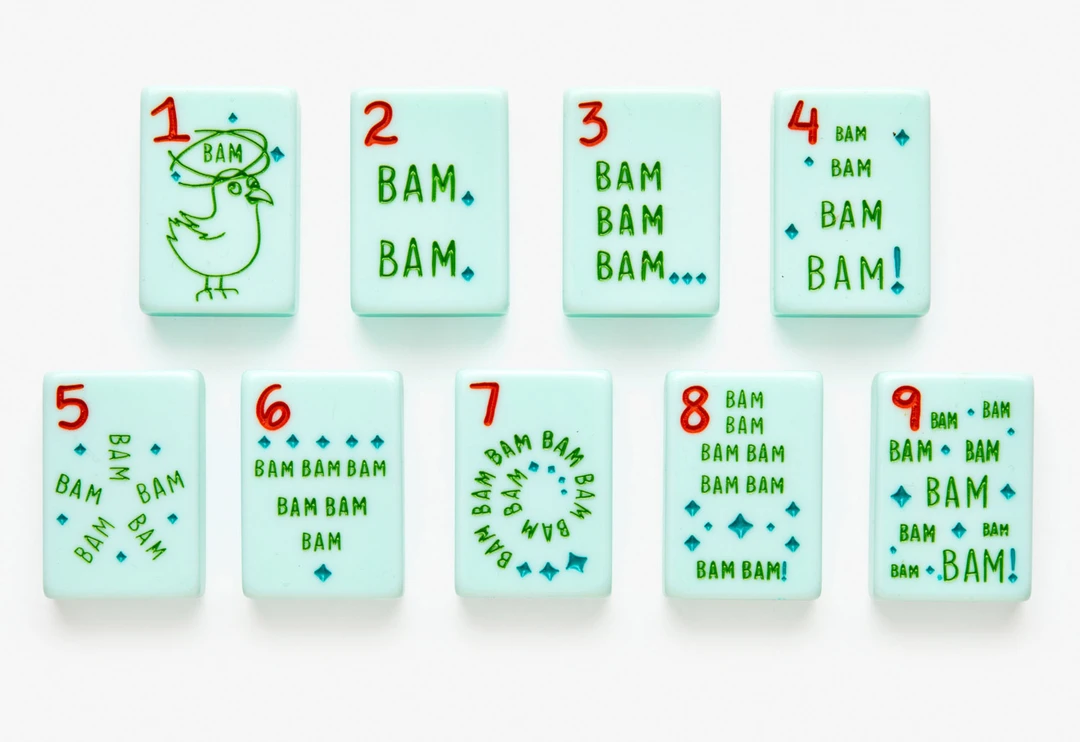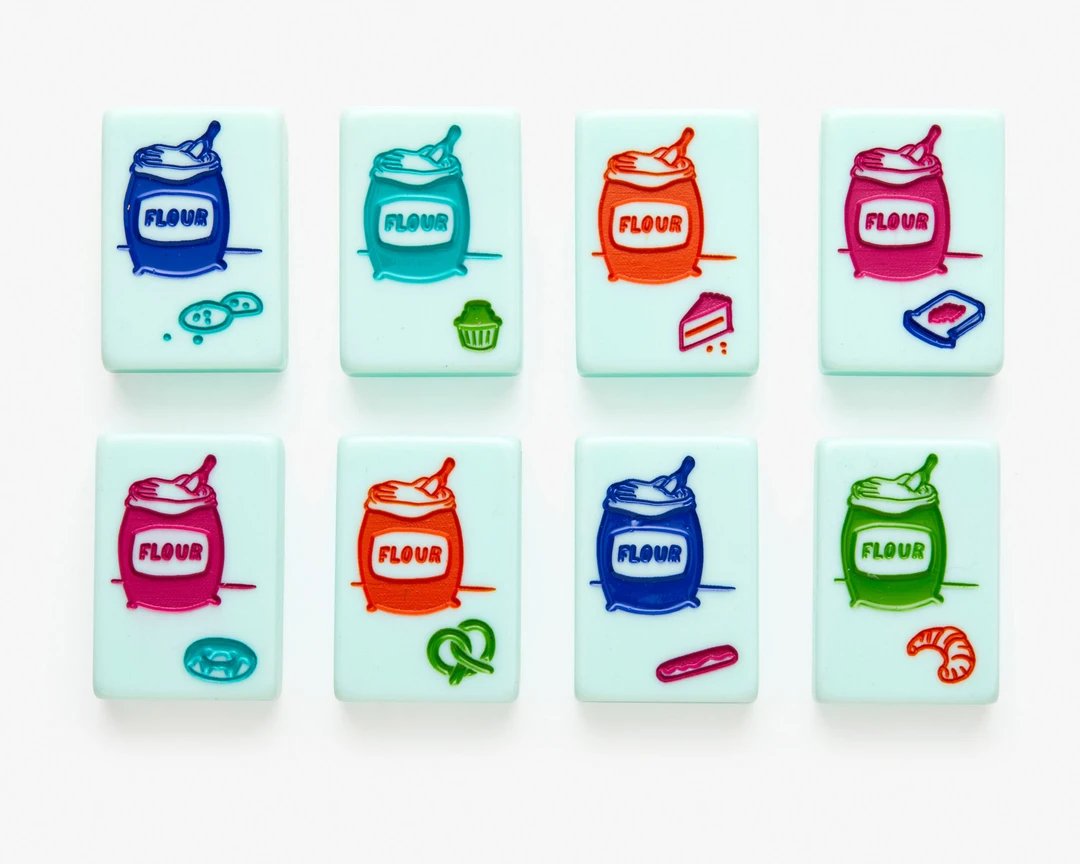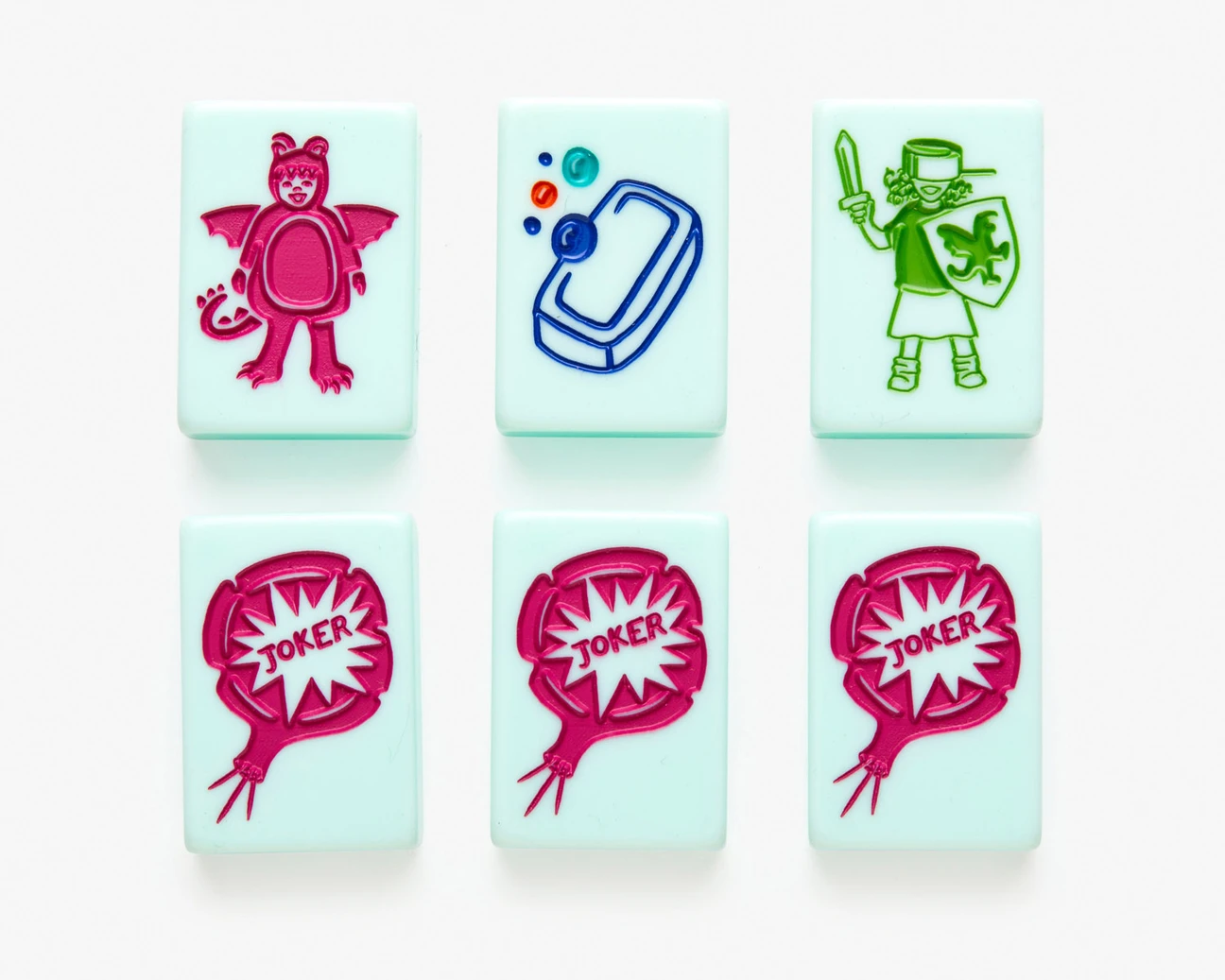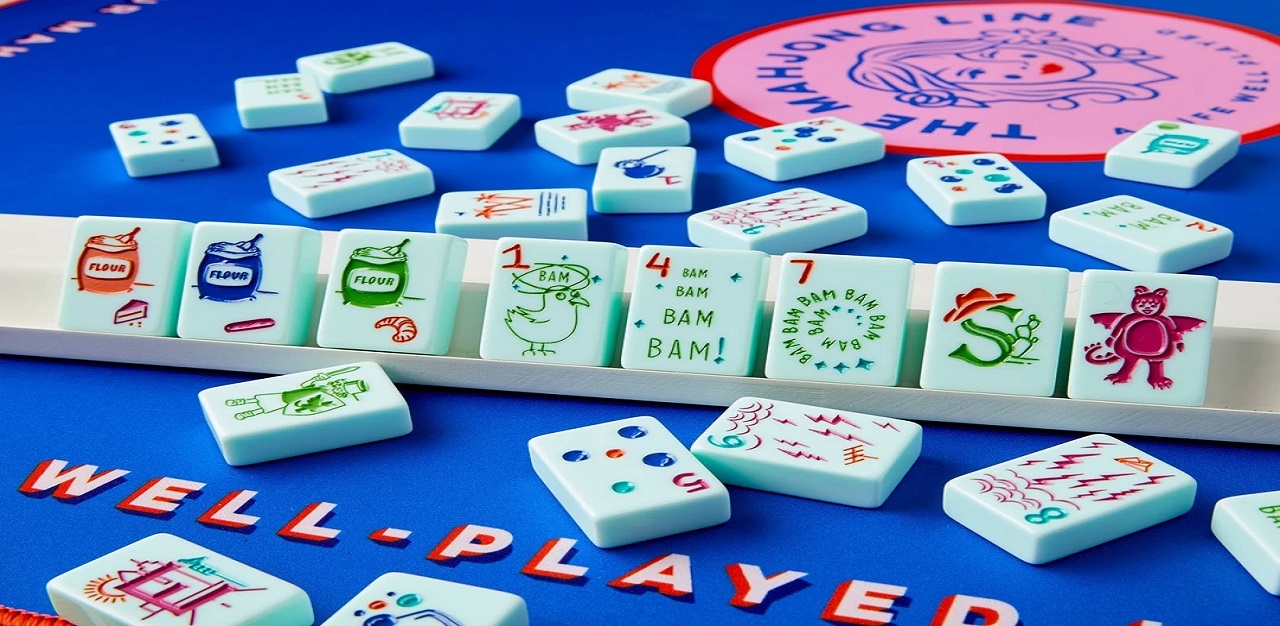A trio of ladies in Texas formed a company, The Mahjong Line, to sell revamp mahjong tiles because the “venerable game needed a respectful refresh“. These exorbitant tiles, ranging from USD325 to USD425, received flak from the Chinese community for being culturally insensitive.
How were the mahjong tiles revamped, exactly?
The company released five sets of mahjong tile designs, most of which look nothing like the original game that many Chinese are familiar with. For instance, the bamboo symbols, which represent the strings (索, sǔo) that ancient Chinese copper coins were strung on, are replaced with meaningless patterns of the word, ‘BAM’.
It even features a clueless chicken, whose ignorance may mirror that of the three founders in The Mahjong Line.

There are neither traditional suits of stones that represent 筒 (tóng), which represents a coin with a square hole in its centre, nor suits of characters that represent 萬 (wàn), which means 10,000. Instead, messy lightning bolts and bubbles adorn the tile faces.
There are even inexplicable bags of flour with croissants, pretzels, and cupcakes, none of which bear relevance to the Chinese culture.

The eight bags of flour above are meant to replace the eight traditional flowers used in mahjong. The original flowers can be used in a variety of way in the original mahjong game. It can be akin to a Joker in card games, as a wild card to complete certain tile sets or combinations, or earn extra points.
The eight original flower tiles are also meaningful, with four tiles representing the four seasons: winter (冬天, dōngtiān), spring (春天, chūntiān), summer (夏天, xiàtiān), and fall (秋天, qiūtiān), and four more representing the four Confucian plants: bamboo (竹, zhú), chrysanthemum (菊花, júhuā), orchid (蘭花, lánhuā), and plum (梅, méi).
It is unclear what the bags of flour represent.
In the original mahjong game, there are also honour suits that include directional winds and arrows that are derived from the ancient imperial exam, archery, and Confucius’ cardinal virtues.
In the honour suit, there is a tile named red center (紅中 , hóng zhōng), which connotes the passing of an imperial exam, a hit in archery, and the Confucian virtue of benevolence. This has been replaced by a devil (yes, an actual red horned devil).
The original green tile on wealth, (發 fā) representing an archer releasing his or her draw and the Confucian virtue of sincerity has been replaced with a kid, dressed up as a knight, with eyes unstrategically shielded by a cooking pot.
The blue tile on whiteboard, (白板, bái ban) meaning freedom from corruption, a miss in archery, or the Confucian virtue of filial piety, has been replaced with a banal soap and several unimpressive bubbles. There are even Whoopie cushions to complete the set.

Were people pissed, and did the company apologise?
Many Chinese were offended with the unnecessary and insensitive mahjong tile refresh, and their unhappiness were evident on social media. One critic, Jeremy Lee, wrote that the chinese culture is “not some cheap coloring book that can be filled-in and be ‘made pretty’ by the standards of privileged teenyboppers”.
A Chinese-Canadian graduate student in Toronto, Yuelin Ge, posted an open letter, stating that she is “beyond disappointed in the atrocity”, and asked if her culture was “too boring for (the founders) and not trendy enough”.
As part of the company’s PR efforts, an apology was stapled on their website and the photo of the three founders were swiftly removed. The founders “recognise (their) failure to pay proper homage to the game’s Chinese heritage”, and understand that “using words like ‘refresh’ were hurtful to many”.
Despite being “deeply sorry” and determined to not “ignore or misrepresent the origins of the game” and knowing that there are “steps to take as (they) learn and grow”, the firm has chosen to continue selling all five mahjong sets.
“We stand by our products and are proud to be one of the many different companies offering a wide range of tiles and accessories for the game of American mahjong,” one of the founders, LeGere, said in a statement.
“That being said, we take full responsibility that in our quest to introduce new tiles we unintentionally recreated an experience shared by many Asian Americans of cultural erasure and are working to correct this mistake.”
Is the tile refresh really culturally insensitive?
While games evolve with time and adopt new values as they are embraced by different communities, this mahjong tile refresh reveals the pattern of Asian culture and artwork being continuously gentrified or used as fodder to market and upsell new products. In the process, the actual cultural origins may be ill understood, dismissed, and even ignored.
By drawing their own distinctions between “American” and “Chinese” mahjong, the founders may have subconsciously used the difference to sell culturally inappropriate mahjong sets to the “American” audience. By taking the liberty to define the game on their own terms, the founders showed a disregard of the cultural nuances in mahjong.
Not every Chinese is offended.
“People are free to do their own adaptations and styles of mahjong. Even when we play the game with different people, there are different rules. Some play with joker tiles and even spirit animals. This is why we always confirm the house rules first whenever playing with new friends.” Miranda (not her real name), a 26 year old Singaporean mahjong enthusiast remarks. She plays mahjong on an average of once or twice a week.
When asked about the various mahjong renditions, Miranda explains that “most Singaporeans remove the extra tiles in the mahjong set because the different variants are not popular in Singapore. But there are actually many different play styles and rules.”
“In this globalised environment, whatever is popular will travel, and it will definitely change along the way.”
Mahjong is more than just a game.
Beyond the cultural significance of each tile face as described above, mahjong is more than just a pastime. This could perhaps be easier explained via a pivotal scene in Crazy Rich Asians where the protagonists were playing a high-stakes game of mahjong.

By folding a winning hand and revealing that she chose to lose on purpose, Rachel (Nick’s girlfriend) showed Eleanor (Nick’s mother) that she loves Nick enough to put his future ahead of her own, that family comes first and that she is self-sacrificing. In this sense, she displays endearing Chinese values, despite being an American.
These apt cultural subtleties could not have come across should the mahjong scene be replaced by a game with another origin, say, poker.
At the end of the day, mahjong is not merely a game and holds within its tiles cultural value that has been passed down for centuries.
Join the conversations on THG’s Facebook and Instagram, and get the latest updates via Telegram.




























